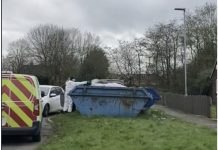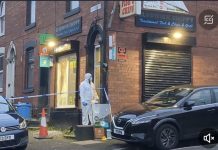The Government regulator has ruled that Rochdale Boroughwide Housing Limited (RBH) has breached the Home Standard and parts of the Tenant Involvement and Empowerment Standard
The Housing Association made a self-referral to the regulator in January 2021 following the tragic death in December 2020 of Awaab Ishak, a two-year-old boy who lived with his parents on the Freehold Estate in Rochdale.
RBH reported that the coroner was investigating the condition of Awaab’s home, including whether this was linked to his death.
The coroner’s report and our investigations established that in January 2017, Awaab’s father first reported the presence of mould at the property and RBH attended to treat this. In statements provided by Awaab’s family to the inquest, they indicated that mould had returned in 2018 and 2019 but that no action was taken. It is noted that the inquest recorded that between 2017 and July 2020 there was no evidence given to RBH of recurring mould at the property.
RBH received a disrepair claim in July 2020 relating to the condition of the property.
Also in July 2020, a healthcare worker engaging with Awaab and his family sent a letter to RBH expressing concern about the mould in the house and the potential impact to Awaab’s health. However, due to numerous different IT systems in place at RBH, not everyone who had contact with the family were aware of this letter until November 2020. Awaab tragically died on 21 December 2020.
In June 2022, RBH was informed by the coroner that it was being treated as an Interested Person(s) for the inquest and was notified of the cause of death which directly linked to exposure to environmental mould.
During the summer of 2022, following media reports about conditions on the Freehold Estate, RBH began visiting all properties on the estate to assess for damp and mould.
This work is ongoing, but RBH has now found that hundreds of properties on the Freehold
Estate have signs of damp and mould. This includes a small number of properties with damp and mould which would constitute a category one Housing Health and Safety Rating System (HHSRS) hazard, and over a hundred with damp and mould which would constitute a category two HHSRS hazard. The remaining properties have smaller areas of mould growth or condensation. RBH has also now identified that ventilation within properties on the Freehold Estate is inadequate.
During the inquest, RBH accepted that it made assumptions about the lifestyle of Awaab’s family and that this affected its decisions regarding how damp and mould were dealt with at their property.
The report found that 80% of tenants on the Freehold Estate who have had their properties surveyed since summer 2022 have signs of damp and mould which RBH was not previously aware of.
The regulator said that it was not clear why RBH was unaware of these problems given that they are widespread across the properties on the Freehold Estate.
However, the outcomes in this case demonstrate that RBH has failed to hear from tenants about the conditions of their homes and therefore has failed to communicate in a way that is appropriate to the diverse needs of tenants in line with part 1.1 of the Tenant Involvement and Empowerment Standard.
It also found that it has become clear that weaknesses in RBH’s IT systems and poor communication across the organisation meant that those responsible for repairs and maintenance at RBH were not aware of the healthcare worker’s concerns initially reported in July 2020, until four months later.
Therefore, decisions RBH made about repairs to Awaab’s home at this time were made without information which may have allowed staff to make more informed decisions and identify potential risks to Awaab and his family. The regulator has concluded that RBH’s repairs and maintenance service did not respond to the needs of Awaab and his family, as well as a significant number of other tenants on the Freehold Estate.







